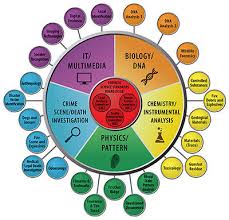Homelessness and crime in the United States present a complex intersection of social issues that challenge communities, policymakers, and social service providers. The relationship between homelessness and crime is nuanced, influenced by a variety of factors including economic conditions, housing availability, substance abuse, mental health issues, and systemic inequalities. This essay delves into the dynamics of homelessness and crime, exploring the impact on individuals and communities, and discussing potential strategies for addressing these interconnected issues.
Understanding the Link Between Homelessness and Crime
Homelessness can lead to increased vulnerability to becoming a victim of crime. Individuals living on the streets or in shelters often face a higher risk of theft, assault, and other forms of violence. The precariousness of their situation can also push some into criminal activities, such as theft or drug-related offenses, as a means of survival. However, it’s crucial to recognize that the majority of homeless individuals do not engage in criminal behavior, and the stereotype of the criminal homeless person is largely unfounded and harmful.
Factors Contributing to the Cycle of Homelessness and Crime
Economic Hardship and Housing Instability
Economic downturns, job loss, and insufficient affordable housing options can lead to homelessness. Once homeless, the barriers to securing employment, such as lack of a permanent address or access to hygiene facilities, can perpetuate the cycle of poverty and homelessness.
Substance Abuse and Mental Health Issues
Substance abuse and mental health disorders are prevalent among the homeless population. These issues not only contribute to the risk of homelessness but also increase the likelihood of encounters with the criminal justice system. Unfortunately, the criminal justice system often becomes a de facto provider of mental health services, due to the lack of adequate mental health care and support services.

Systemic Inequalities
Systemic inequalities, including those based on race, gender, and socioeconomic status, further exacerbate the risk of homelessness and involvement in criminal activities. Marginalized groups are disproportionately affected by these issues, highlighting the need for targeted interventions.
Addressing Homelessness and Crime: Strategies and Solutions
Housing First Approach
The Housing First model offers permanent, affordable housing as a primary strategy for solving homelessness, without preconditions such as sobriety or employment. This approach has been shown to improve stability and reduce contacts with the criminal justice system among formerly homeless individuals.
Integrated Support Services
Providing integrated support services, including mental health care, substance abuse treatment, and job training, can address the underlying issues contributing to homelessness and criminal behavior. These services should be tailored to meet the diverse needs of the homeless population.
Community-Based Policing
Community-based policing strategies can help build trust between law enforcement and homeless communities. By focusing on protection and assistance rather than criminalization, police can play a significant role in connecting homeless individuals with the services they need.
Policy Reforms
Policy reforms are needed to address the root causes of homelessness and reduce the criminalization of homelessness-related activities. This includes investing in affordable housing, reforming laws that penalize homelessness, and ensuring access to comprehensive social services.
Building on the foundation laid in the previous discussion, it’s important to deepen the understanding of how homelessness and crime are interconnected and explore additional strategies to mitigate these challenges.
Enhancing Legal and Social Protections for the Homeless
Protection against discrimination and violence is crucial for homeless individuals. Legal frameworks should be strengthened to safeguard the rights of homeless people, ensuring they have access to justice and are protected from exploitation and abuse. For example, hate crime legislation can be expanded to include offenses specifically targeting homeless individuals, providing them with greater protection under the law.
Expanding Access to Healthcare Services
Healthcare is a fundamental need that is often unmet for those experiencing homelessness. Expanding access to healthcare services, including preventive care, mental health services, and substance abuse treatment, can significantly impact the well-being of homeless individuals. Mobile health clinics and partnerships with community health organizations can improve healthcare accessibility for this population.

Strengthening Community Support Networks
Communities play a vital role in supporting homeless individuals. By strengthening community support networks, including faith-based organizations, non-profits, and volunteer groups, a more comprehensive safety net can be provided. These networks can offer immediate assistance, such as food and shelter, and connect individuals with longer-term services and resources.
Implementing Restorative Justice Practices
Restorative justice practices offer an alternative approach to traditional criminal justice processes, focusing on the rehabilitation of offenders through reconciliation with victims and the community at large. Implementing restorative justice practices can be particularly effective in addressing minor offenses often associated with homelessness, reducing recidivism and facilitating more positive outcomes.
Advocating for Policy Change at the National and Local Levels
Advocacy for policy change is critical in addressing the systemic issues contributing to homelessness and crime. This includes lobbying for increased funding for affordable housing, supporting policies that decriminalize homelessness, and advocating for changes in social service delivery systems to better meet the needs of homeless populations.
Education and Awareness Campaigns
Education and awareness campaigns can help change public perceptions of homelessness and encourage community engagement and support. By highlighting the challenges faced by homeless individuals and the structural factors contributing to homelessness, these campaigns can foster a more compassionate and proactive response from the broader community.
Investing in Prevention
Finally, investing in prevention is essential to reduce the number of people who become homeless in the first place. This includes supporting at-risk populations through rental assistance programs, eviction prevention services, and family support services. By addressing the root causes of homelessness, such as poverty, lack of affordable housing, and unemployment, efforts can be made to prevent homelessness before it starts.
Tackling the complex issues of homelessness and crime requires a coordinated effort that includes policy reform, community engagement, and the provision of comprehensive services. By focusing on prevention, protection, and support, alongside fostering a more inclusive and compassionate society, it is possible to address the root causes of homelessness and reduce its association with crime. This comprehensive approach not only benefits those experiencing homelessness but also enhances the overall safety and well-being of communities across the United

Advocating for Mental Health and Substance Abuse Treatment
Given the high incidence of mental health issues and substance abuse among the homeless population, there is a need for a substantial increase in accessible treatment services. Advocacy for mental health and substance abuse programs that are integrated with other homeless services can ensure that individuals receive holistic care. This approach not only addresses the symptoms but also the underlying causes of homelessness and criminal activity.
Implementing Trauma-Informed Care
Many homeless individuals have experienced traumatic events, which can affect their behavior and interactions with service providers. Implementing trauma-informed care across all services for the homeless acknowledges the widespread impact of trauma and seeks to provide services in a way that is respectful of and responsive to the trauma experiences of individuals.
Fostering Community Involvement
Engaging the community in addressing homelessness can lead to more compassionate and inclusive solutions. Community involvement can take many forms, from volunteerism and advocacy to supporting local homeless service providers. Community education about the causes and effects of homelessness can reduce stigma and foster a supportive environment for addressing these issues.
Conclusion
The intersection of homelessness and crime in the USA is a manifestation of broader social and economic challenges. Effective solutions require a multifaceted approach that addresses the root causes of homelessness, provides support for those at risk, and seeks to reform systems that contribute to the cycle of homelessness and crime. By prioritizing housing, integrated support services, and community engagement, along with policy reforms, it is possible to make significant progress toward alleviating these interconnected issues and improving the lives of some of the most vulnerable members of society.



